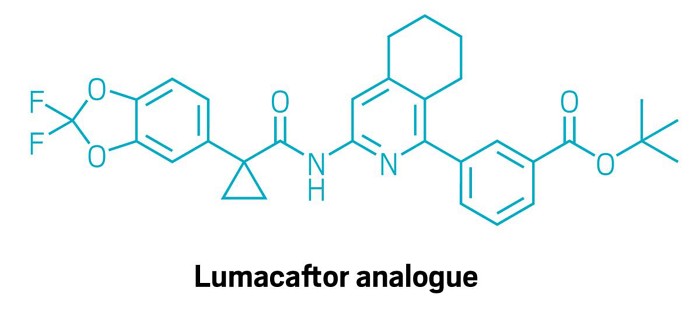Advertisement
Grab your lab coat. Let's get started
Welcome!
Welcome!
Create an account below to get 6 C&EN articles per month, receive newsletters and more - all free.
It seems this is your first time logging in online. Please enter the following information to continue.
As an ACS member you automatically get access to this site. All we need is few more details to create your reading experience.
Not you? Sign in with a different account.
Not you? Sign in with a different account.
ERROR 1
ERROR 1
ERROR 2
ERROR 2
ERROR 2
ERROR 2
ERROR 2
Password and Confirm password must match.
If you have an ACS member number, please enter it here so we can link this account to your membership. (optional)
ERROR 2
ACS values your privacy. By submitting your information, you are gaining access to C&EN and subscribing to our weekly newsletter. We use the information you provide to make your reading experience better, and we will never sell your data to third party members.
Synthesis
Anthrax Antigen Synthesized
Total synthesis of surface tetrasaccharide could aid vaccine development
by Stu Borman
October 3, 2005
| A version of this story appeared in
Volume 83, Issue 40
CARBOHYDRATES
Anthrax, a lethal disease caused by the bacterium Bacillus anthracis, is a serious terrorism concern. In 2001, anthrax spores mailed to media and U.S. Senate offices resulted in five deaths. Antibiotics and vaccines to fight the disease are being studied by a number of research groups worldwide.
Now, researchers have achieved the first total synthesis of a key oligosaccharide from the anthrax bacteriums surface glycoprotein. Postdoc Daniel B. Werz and chemistry professor Peter H. Seeberger at the Swiss Federal Institute of Technology (ETH), Zurich, carried out the work (Angew. Chem. Int. Ed., published online Sept. 19, dx.doi.org/10.1002/anie.200502615).
The oligosaccharide includes a unique terminal sugar that has so far been found only in the anthrax bacterium. The ability to synthesize the tetrasaccharide and analogs from simple precursors could aid discovery of carbohydrate-based vaccines with selective antianthrax activity. An anthrax vaccine for humans is available, but it is hard to administer and causes some adverse reactions.
Last year, microbiology professor Charles L. Turnbough Jr. and coworkers at the University of Alabama, Birmingham, determined the structure of the anthrax bacteriums surface tetrasaccharide and discovered its unique amido-group-containing terminal sugar, which they named anthrose (J. Biol. Chem. 2004, 279, 30945).
Seeberger and coworkers prepared anthrose by a new route. They then constructed the tetrasaccharide convergently by fusing separately constructed disaccharide halves. The researchers also attached a pentenyl group that can be used to hook the tetrasaccharide or analogs to a carrier protein to potentially enhance immunogenicity.
The synthesis involves an artful finessing of differentiation between functional groups and is a nice application to a clearly important goal, says chemistry professor Samuel J. Danishefsky of Memorial Sloan-Kettering Cancer Center, New York City.






Join the conversation
Contact the reporter
Submit a Letter to the Editor for publication
Engage with us on Twitter